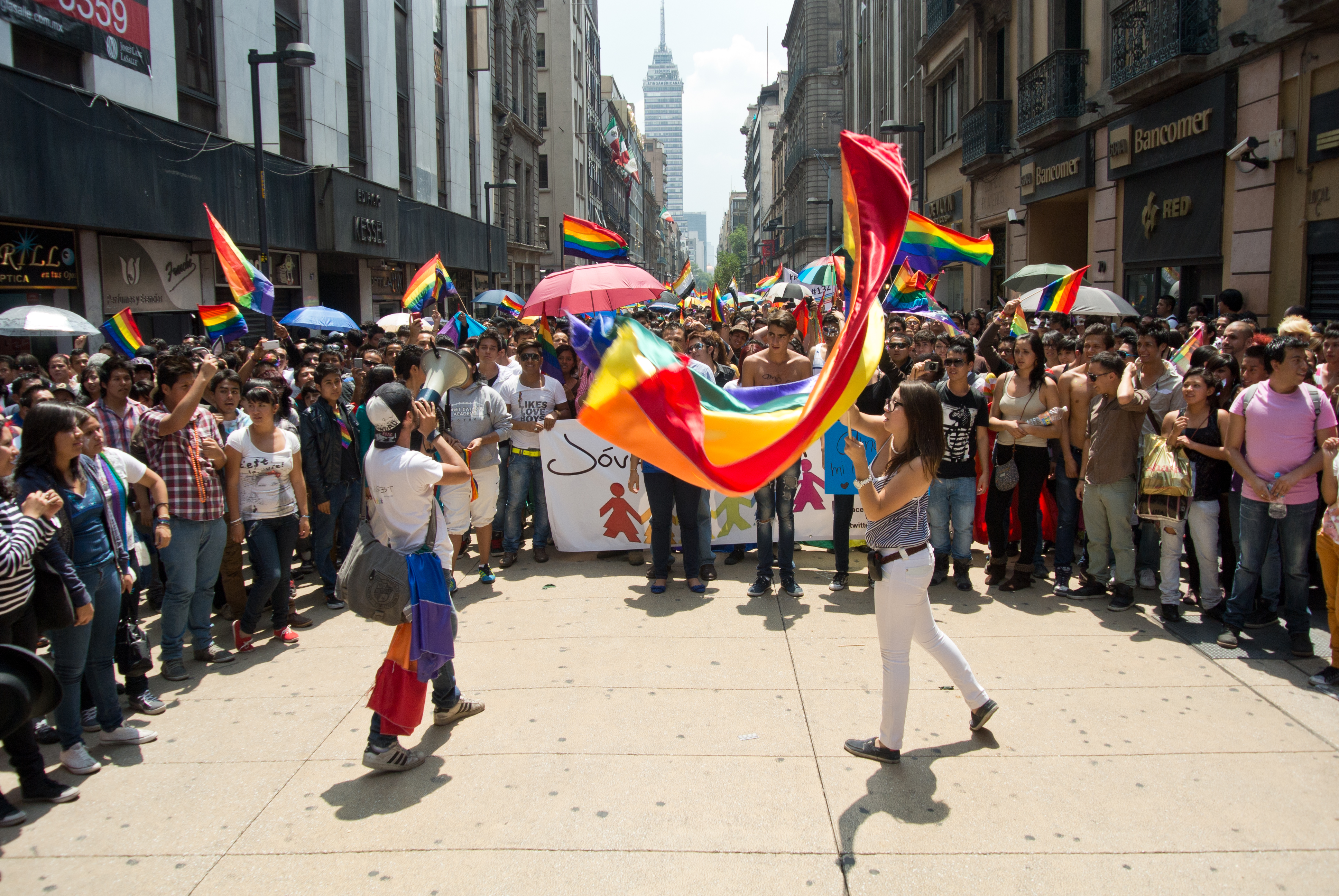by Arturo Pineda
*also published in The Politic*
In May on the National Day of the Fight against Homophobia, the Mexican President, Peña Nieto of the Partido Revolucionario Institucional (PRI), announced via Twitter he had signed an initiative to amend the Mexican Constitution to recognize same-sex marriage across the country, and grant adoption rights to same sex couples. The President’s initiative comes a year after the Supreme Court of Mexico ruled that it was unconstitutional for states to not recognize same-sex marriages as legitimate, and ban same-sex couples from adopting children. The President’s isolated proposal for same-sex legalization and universally equal adoptions rights shocked the nation because of the unusual relationship Mexico has with same-sex rights. The PRI did not publically support the President’s initiative after its announcement.
As to date, a total of 9 states 0ut of 31 states and 1 Federal District (the capital) perform same-sex unions without restrictions. Since 2006, it has been common practice for individual states’ congresses recognize same-sex unions at their respective pace. This manifests itself in one state each year recognizing same-sex unions as legitimate. Some states even ventured to petition rights for same-sex adoption rights. Mexico City led the legalization of same-sex unions in Latin America by being the first territory to legalizing the unions in 2006, but did not implement the law fully until 2009. The state of Coahuila followed suit in 2007, and performed the first legal same-sex union in the nation in the same year.
The President’s tweet was met with widespread discontent on social media platforms. Many accused the President of imposing the “gay agenda” on the nation. This discontent was reflected by the elections in the following month of June. The PRI suffered major losses in national elections and lost its majority status, which it had maintained since the party’s inception in 1929. The party lost 4 governorships in re-elections, and now only controls 15 of the 31 states, or about 45% of the total population. Media exit polls and the President’s’ own party attributed the loss of government positions to the President’s support for same-sex marriage.
In September protests against the legalization of gay-marriage were spearheaded by the National Front for the Family Coalition. The coalition consisted of over 1,000 community organizations ranging from Catholic and Methodists organizations to orphanages to anti-abortion groups. The coalition had representatives from over 27 states and the federal district. Catholic church figureheads, including the Pope and Archbishops, openly supported the movement and were vocal in opposing the initiative. They identified themselves as supporters, and not organizers in the movement.
The National Front’s leaders stated that the group is not opposed the rights of the LGBT community, rather they view the initiative as an ideological battle between family values, the sacred institution of marriage, and an imposition of gay ideology. This belief is widely held due to the ubiquitous presence of Catholicism in quotidian life. According to the Pew Research Center, over 80% of the population identifies as Roman Catholic. When asked about same-sex marriage, 50% of Mexicans were in support of same-sex marriage legalization, and 42% oppose the legalization. When asked about the morality of same-sex relations, over half (55%) viewed same-sex relations as morally wrong, while only 22% said it is morally right. It is clear that the majority of the population was able to remove their personal moral biases when discussing LGBTQ civil rights, yet the National Front walked a fine line in their approach, and conflated religious morality with civil rights.
The Catholic church’s involvement in the issue was a point of contention due to the blurred separation of powers. Mexican laws stipulate a separation of church and state, yet the Church’s heavy support and involvement were interpreted as the Church bypassing the legislature and exploiting its influence in the public sphere to achieve political interests.
The tension culminated in widespread simultaneous protests led by The National Front across the nation in the month of September. The marches culminated in, “The March for the Family,” lead by the National Front on September 25th in Mexico City. Over a hundred thousand protesters dressed in white, held blue and pink balloons to represent the sanctity of heterosexual marriages. Protesters’ signs read, “Papa + Mama = Happy Family” and “Don’t Mess With My Kids”. Simultaneously, counter-protests were staged by LGBTQ community members and supporters of same-sex legalization. Protest signs read, “I am Gay and Catholic” and “Somos Tus Hijxs”.
A few protests across the nation resulted in verbal altercations and mild physical violence but the vast majority of the protest were absent of any altercations. The leaders of the National Front requested a meeting with President Nieto to discuss the advocating of the gay agenda. The request was never answered by the President.
After months of social unrest, the Committee on Constitutional Matters overwhelmingly voted to reject the amendment to the Constitution in a 19-8 vote with one abstention on November 9th. The committee had 12 members of the President’s own party, and 10 of the party members voted against the amendment. The dissenting opinion argued that the approving of the initiative would violate the rights of individual states to set their own civil codes. The dissenting opinion did not cite the moral argument made by the The National Front as a reason to reject the initiative.
In the aftermath, the Catholic church’s involvement was a point of contention due to the blurred separation of powers. Mexican laws stipulate a separation of church and state, yet the Church’s heavy support and involvement were interpreted as the Church bypassing the legislature and exploiting its influence in the public sphere to achieve political interests.
Political analysts have cited the overwhelming Catholic demographic as a primary reason for the initiative’s failure. However, a predominantly large Catholic population is not a deterrent for same-sex legalization. Ecuador, Argentina, and Colombia, are countries whose Catholic population exceeds 70%, and have all legalized same-sex marriage since 2008, 2010, and 2016, respectively. Additionally, the countries of Brazil, Chile, and Uruguay all recognize same-sex marriage as legal. These countries have Catholic populations of at least 40%. Adoption rights vary within the countries, but the majority allow same-sex couples to adopt without restrictions.
Legalization of same-sex marriage will not erase stigma or discrimination against but it is a formal step to step to obtaining equality. Perhaps, it is just not the time for Mexico. The majority of the youth ages 18-34 is in support of same-sex legalization (63%) but they remain a minority voting block constituting roughly 25% of eligible votes, therefore, not having the voting power to change the situation at the present. A clear separation of personal moral biases and undeniable civil rights will also have to occur across the nation’s conscious in order for a national change to occur. In the near future, Mexico may try again and succeed but it will require a collective effort, and not a lone wolf President’s actions.



